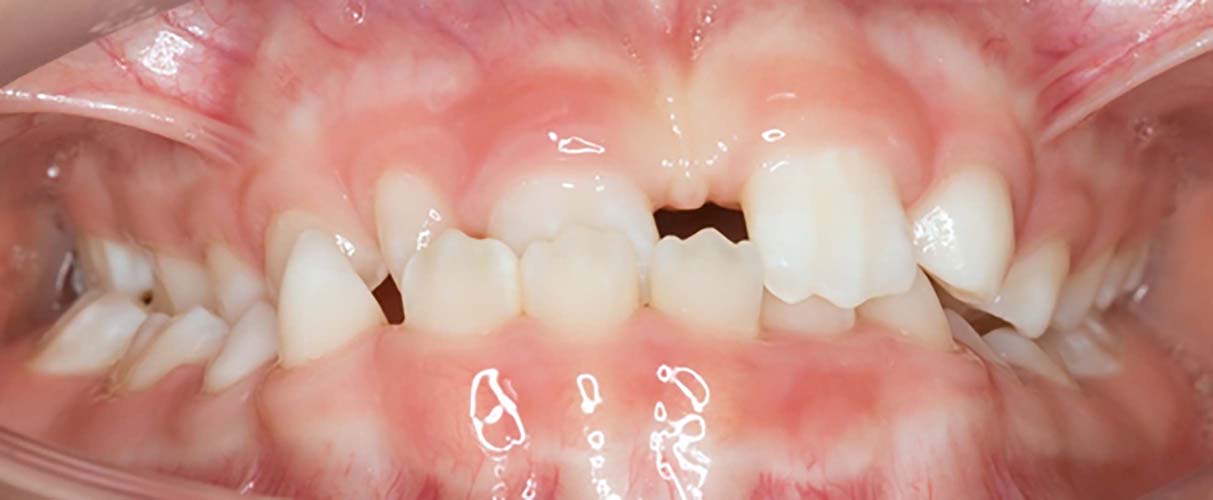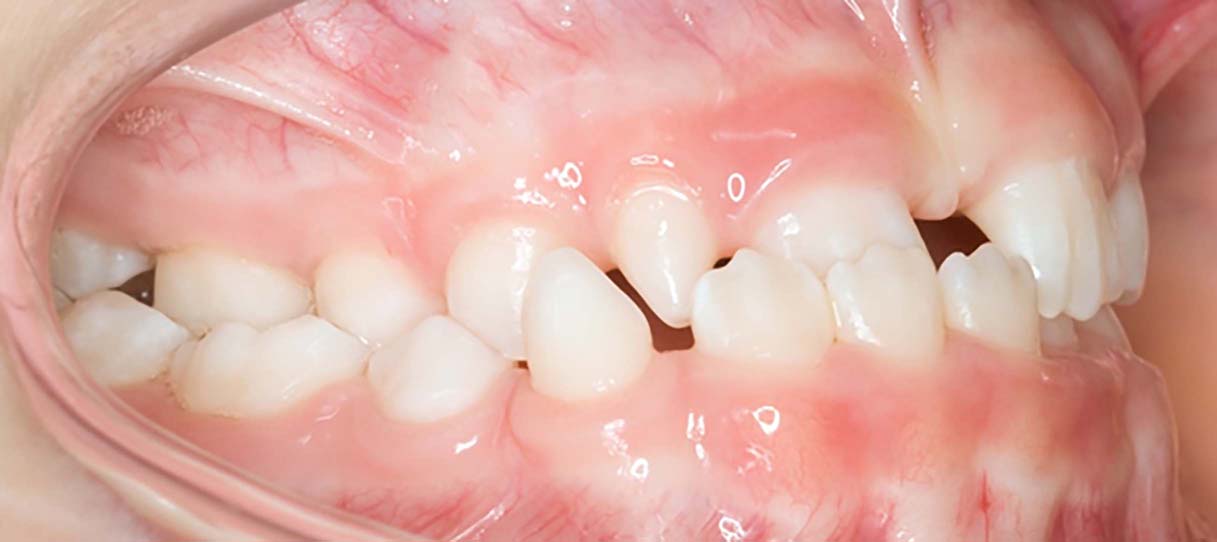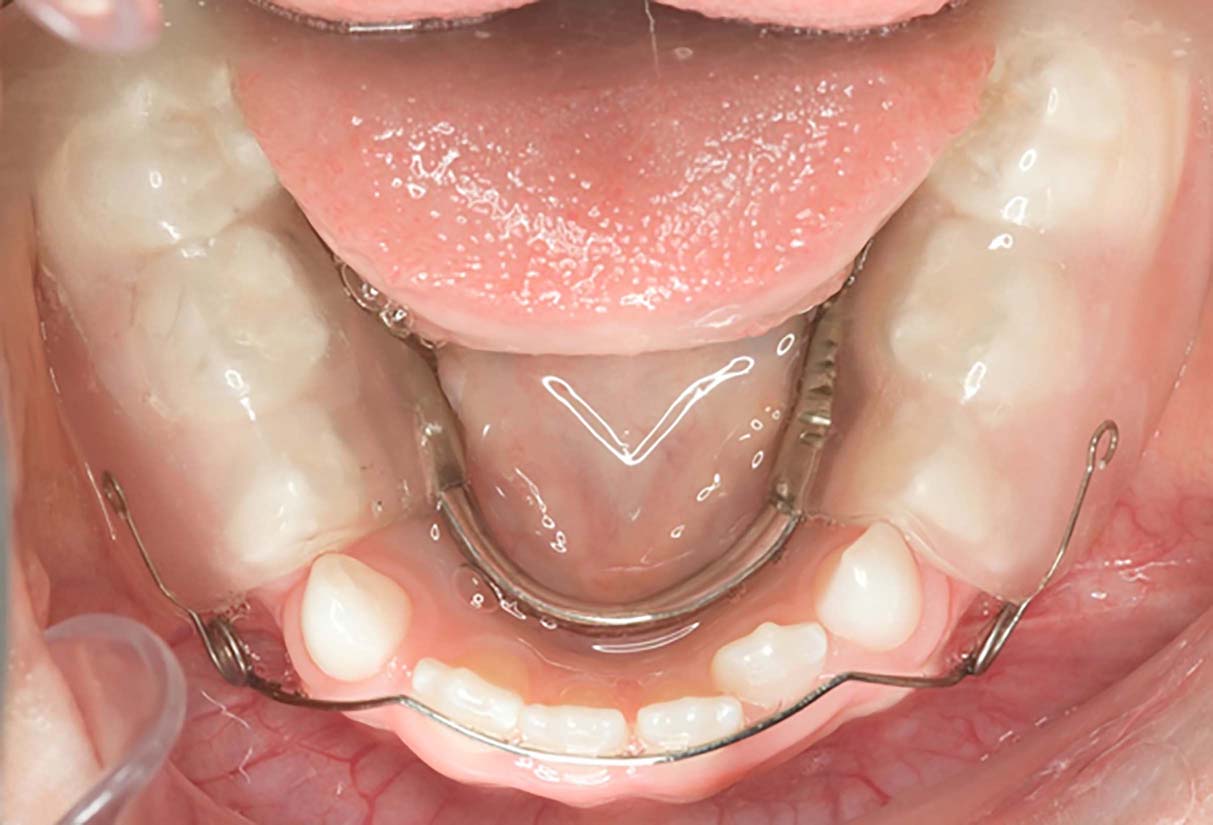Abstract
This case demonstrates the use of a novel design of lower removable appliance to correct an anterior crossbite, by retracting the lower incisors.
From Volume 12, Issue 1, January 2019 | Pages 6-7
This case demonstrates the use of a novel design of lower removable appliance to correct an anterior crossbite, by retracting the lower incisors.

Anterior crossbites are usually present in the mixed dentition. The prevalence can vary depending on the age of the child examined and his/her country of origin. From a UK perspective, the prevalence has been reported to be between 7% and 10%.1 The orthodontic literature has numerous publications relating to the correction of single tooth anterior crossbites; the evidence in support of the most effective appliance is weak. This has been highlighted by a recent review of the literature in this area.2 Lower removable appliances are rarely used in orthodontics in the UK, usually due to poor compliance associated with discomfort from the appliance. However, there appears to be some reconsideration of this appliance and its versatility as articles have appeared in the literature regarding its use in the management of ectopic lower permanent canines.3,4 This case report focuses on the use of a lower removable appliance to correct an anterior crossbite in a child in the early mixed dentition.
An eight-year-old female was referred to the Paediatric Dentistry department at Dundee Dental Hospital in 2011 with hypodontia. Clinical and radiographic examination revealed the patient to be in the early mixed dentition, with delayed eruption of the upper first permanent molar, a peg-shaped UR2 and severe hypodontia, missing UR3,7,8, UL2,3,7,8, LL7,8 and LR7,8. There was no reported family history of hypodontia. The patient had a mild skeletal III pattern with Class III incisors, a right side buccal crossbite and associated displacement (Figures 1 and 2).


Despite the patient presenting with a large median diastema, her complaint was directed only towards the anterior crossbite, and both the patient and her mother were keen to have this corrected.
As the upper first permanent molars were partially erupted, and the rest of the upper buccal segment comprised primary molars, the potential available undercuts for retention of an upper removable appliance were poor. The upper incisors were already proclined and the only suitable undercuts were lingually in the lower arch, so it was decided to make a lower removable appliance (LRA). The design consisted of occlusal coverage buccally, bilaterally with a connecting lingual bar, and the active component was a modified Robert's retractor. The occlusal coverage was constructed in Durasoft® 1.8 mm, which is a bilaminate, with the hard layer on the outside of the appliance allowing any bonding of acrylic to the material. The Robert's retractor was constructed in 0.5 mm stainless steel, and the lingual bar was a standard stainless steel lingual arch as used in the construction of a lower partial denture (Figures 3 and 4). Not only did the Durasoft® engage in the lingual undercuts and provide retention of the appliance, it also provided occlusal capping to disclude the anterior teeth.


The appliance was fitted and appropriate instruction for care given. The patient was reviewed approximately every six to eight weeks to have the appliance reactivated. After four months of wear, the patient had worn down the occlusal capping, so the decision to add some glass ionomer cement (GIC) to the upper primary molar teeth and to add some acrylic to the appliance, was taken rather than make a new appliance. The patient was reviewed for a further six months by which time the crossbite was corrected; however, the patient had bilateral open bites (Figure 5). The decision was made to leave the remaining GIC on the deciduous teeth as these were close to exfoliation. The patient was instructed to wear the appliance at night only to maintain crossbite correction and allow the posterior occlusion to settle. Three months later the patient was reviewed and the lateral open bites were closed. The patient has since been reviewed one year since stopping appliance wear and the crossbite correction remains stable. She still has no concerns regarding her upper anterior spacing but will be reviewed by the hypodontia team in due course.

Following fitting of the LRA, the patient adapted well and did not complain of any irritation buccally or lingually. She also had no temporary speech issues. Due to the retention system (Durasoft® buccal capping), the appliance did not become less retentive between appointments. The only drawback was the wear to the occlusal capping which could be managed by either bonding acrylic, where the wear had occurred, or by adding GIC to the opposing primary molars.
A lower removable appliance is an acceptable alternative to an upper removable appliance when there are limitations with retention during the mixed dentition and further proclination of the upper incisors is not possible. This novel design was well tolerated by the patient, easy to adjust and facilitated correction of the crossbite.